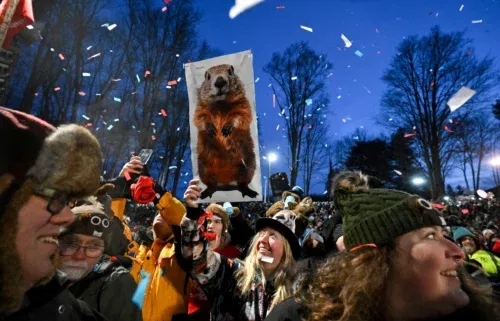New year, new weather pattern

By Jared Shelton News-Press NOW meteorologist
The 2023-24 cold season has been a stale one for winter lovers across the Midwest. Aside from a few brief spells of polar air, temperatures here in the Central Plains generally trended above average through the final three months of last year, while precipitation remained below average.
Given the presence of strong El Nino conditions (the warm phase of a temperature anomaly in the equatorial Pacific), the mild and dry pattern is not exactly a surprise, as El Nino generally tends to favor warmer and drier winters across the Northern half of the United States.
The recent lack of cold air and moisture has left the St. Joseph area with a measly 2 to 3 inches of snow since October, most of which fell in a single snowfall event in late November. Combined with sparse rainfall over the same period, drought conditions also have persisted and intensified across the lower Missouri River Valley, reaching a peak around the winter solstice, when moderate to severe drought was widespread through Northwest Missouri and Northeast Kansas.
A potent Christmas-time storm system recently began ushering in changes to the prevailing pattern, starting with a push of deep moisture from the Pacific and Gulf Of Mexico. From Christmas Eve to Christmas Day a total of 1.6 inches of rain fell in St. Joseph, downgrading drought severity across the area. In the wake of last week’s system, seasonable air also has spilled into the Central Plains, with temperatures running within five degrees of normal since the start of 2024.
According to extended outlooks issued by NOAA’s Climate Prediction Center, a shift in the dominating upper-level pattern across the Continental U.S. is bringing an extended break from the less-than-wintry conditions of December 2023. Thus far, upper-level ridging has intermittently blocked polar air masses and potent winter storm systems from passing through the central and northern United States. The first half of January is predicted to bring more upper-level troughing through these regions in response to a strong ridging pattern expected to develop over Alaska and the Northern Pacific. Polar lows will dive south and east making for a more progressive winter-like regime through a large section of the lower 48 states, including the Central Plains.
The Climate Prediction Center’s six- to 10- and eight- to 14-day outlooks bring a swath of below-average temperature anomalies from the Pacific Northwest to the Mississippi River, with above-normal precipitation anomalies across many of the same areas. The first notable shift in the short-term forecast could arrive in the form of a winter storm, as a polar low swings south and interacts with deep moisture from the subtropical jet stream early next week. Uncertainty in the exact track and timing of the approaching system is keeping the local snowfall forecast fairly fuzzy. Even so, it’s become increasingly clear that parts of the plains and Midwest soon will see the first heavy snow of the season.




